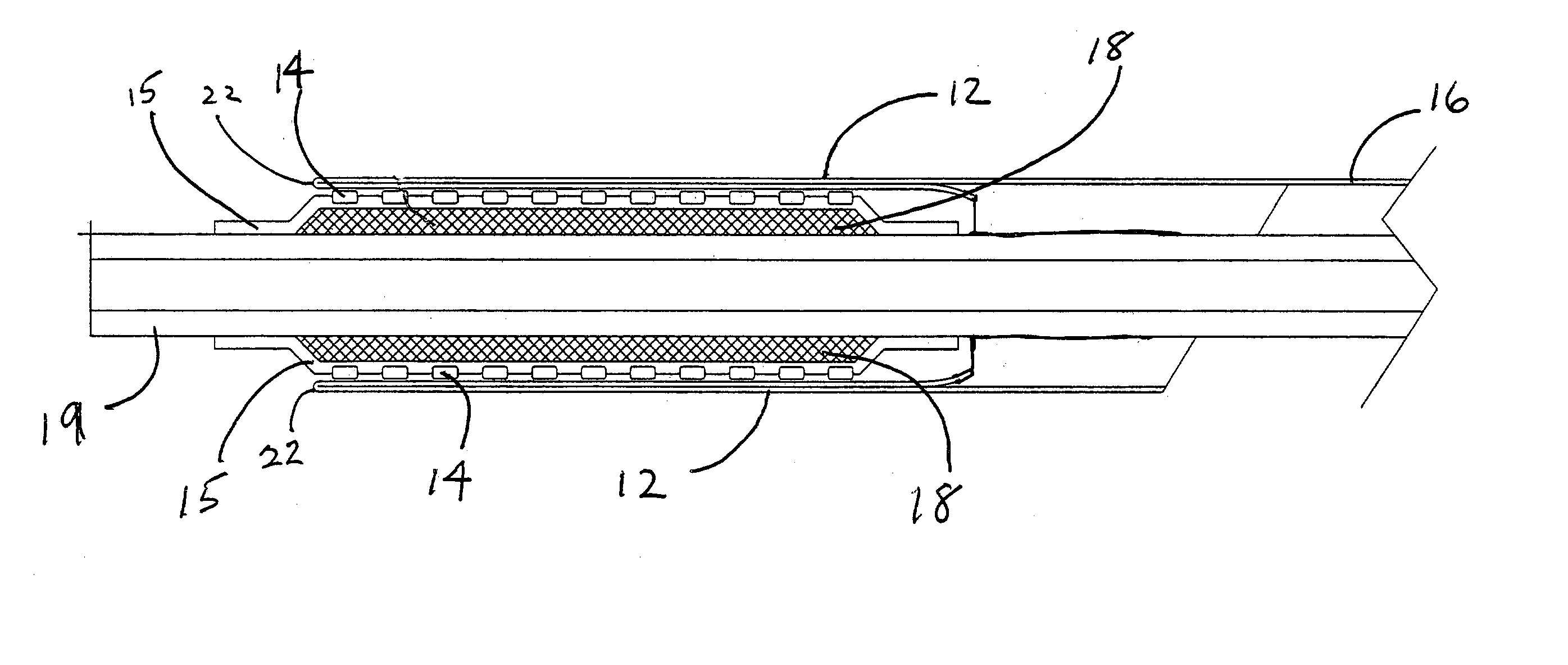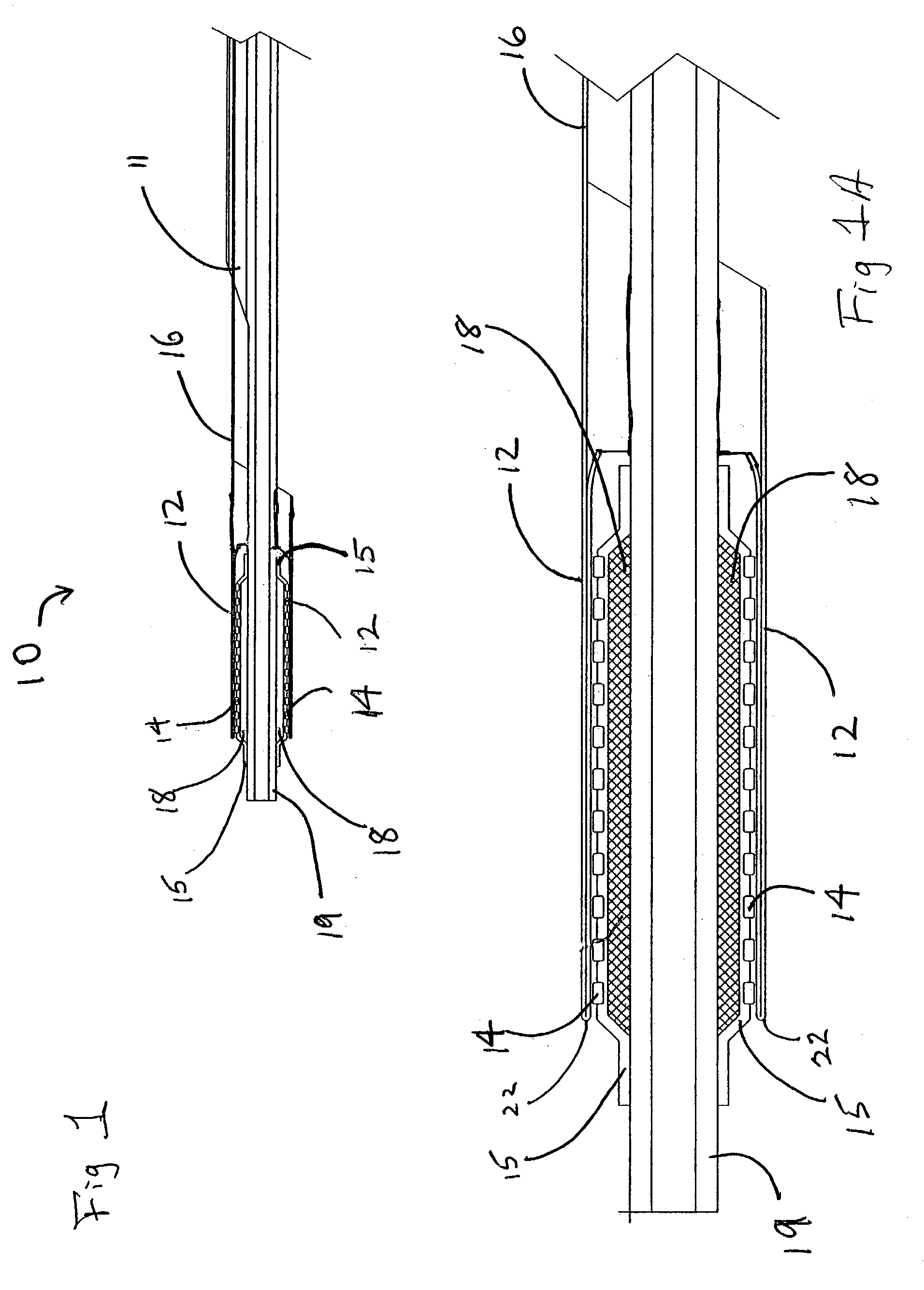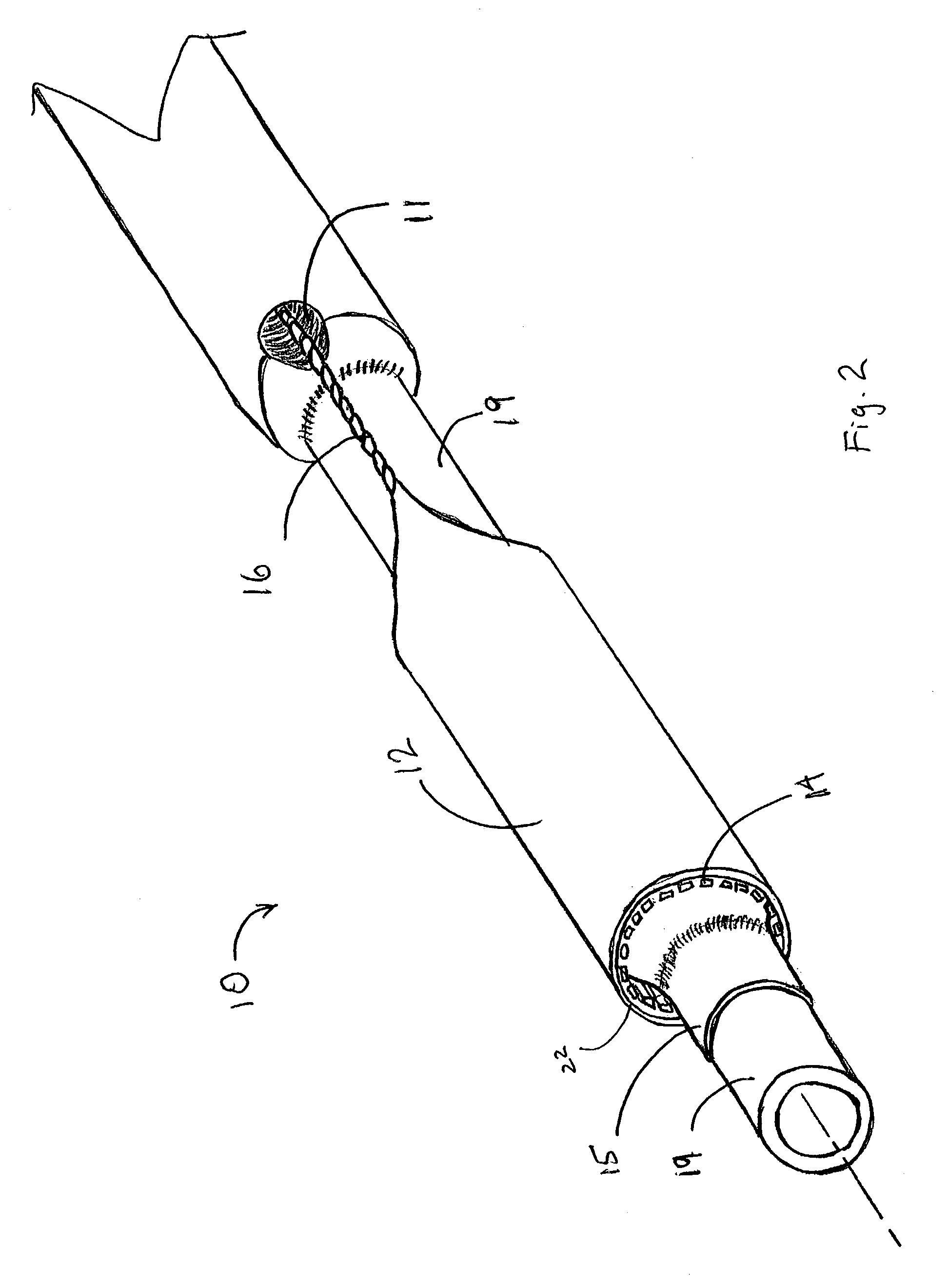Deployment system for an endoluminal device
a technology of endoluminal device and deployment system, which is applied in the field of implantable medical device assemblies, can solve the problems of thin-walled sheaths and reduce the profile of endoluminal device combinations, and achieve the effect of increasing the flexibility of the distal portion and reducing the profil
- Summary
- Abstract
- Description
- Claims
- Application Information
AI Technical Summary
Benefits of technology
Problems solved by technology
Method used
Image
Examples
example 1
[0045]This example describes the construction of a deployment system of the present invention. Construction of the system began with the preparation of a distal catheter shaft for receiving an expandable stent. Once the distal catheter was prepared, the expandable stent was placed within a sheath—deployment line. The distal catheter portion of this combination was attached to a primary catheter shaft. The deployment line portion was then routed through the primary catheter to a control knob. The control knob was part of a hub located proximally on the primary catheter. The sheath portion of the sheath—deployment line was in the form of a single-walled tube.
[0046]A tubular material three inches long was obtained from Burnham Polymeric, Inc., Glens Falls, N.Y. for use as the distal catheter shaft. The tube was made of a polyether block amide material, commonly known as PEBAX® resin and reinforced with a stainless steel braid. The outer diameter (OD) was 1.01 mm and the inner diameter ...
example 2
[0050]This example describes the construction of a deployment system of the present invention. Construction of the system begins with the preparation of a distal catheter shaft for receiving an expandable stent. Once the distal catheter was prepared, the expandable stent was placed within a sheath—deployment line. The distal catheter portion of this combination was attached to a primary catheter shaft. The deployment line portion was then routed through the primary catheter to a control knob. The control knob was part of a hub located proximally on the primary catheter. The sheath portion of the sheath—deployment line was in the form of a double-walled tube.
[0051]A tubular material three inches long was obtained from Burnham Polymeric, Inc., Glens Falls, N.Y. for use as the distal catheter shaft. The tube was made of a polyether block amide material, commonly known as PEBAX® resin and reinforced with a stainless steel braid. The outer diameter (OD) was 1.01 mm and the inner diameter...
example 3
[0055]This example describes the incorporation of a means for initiating or maintaining conversion of the sheath portion of the sheath—deployment line to deployment line by introducing perforations and intentional stress risers into the sheath.
[0056]The sheath—deployment line from Example 2 is modified as follows. Prior to rolling the sheath portion into a double-walled construct and loading the stent therein, the sheath is perforated and / or supplied with “stress risers” that facilitate in separation of the tubular sheath upon retraction of the deployment line portion. An appropriate laser for making the perforations or stress risers is a 20 watt CO2 laser obtained from Universal Laser Systems, Scottsdale, Ariz. To form the perforations in the sheath portion, the sheath is placed on a sandblasted stainless steel mandrel and exposed to the laser to cut a series of holes in a part of the tube that will subsequently serve as the outer wall of the double-walled construct. The geometry o...
PUM
 Login to View More
Login to View More Abstract
Description
Claims
Application Information
 Login to View More
Login to View More - R&D
- Intellectual Property
- Life Sciences
- Materials
- Tech Scout
- Unparalleled Data Quality
- Higher Quality Content
- 60% Fewer Hallucinations
Browse by: Latest US Patents, China's latest patents, Technical Efficacy Thesaurus, Application Domain, Technology Topic, Popular Technical Reports.
© 2025 PatSnap. All rights reserved.Legal|Privacy policy|Modern Slavery Act Transparency Statement|Sitemap|About US| Contact US: help@patsnap.com



